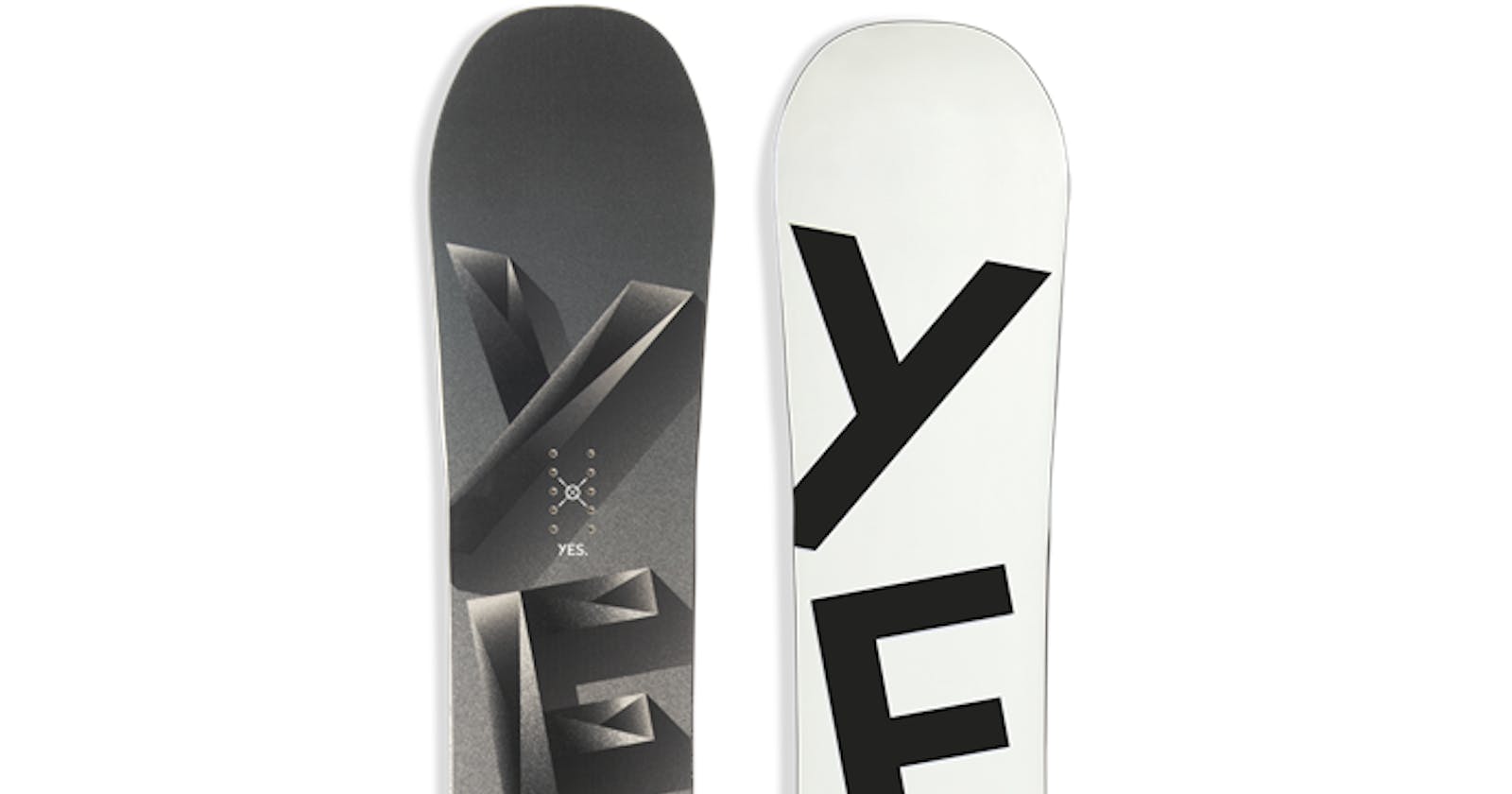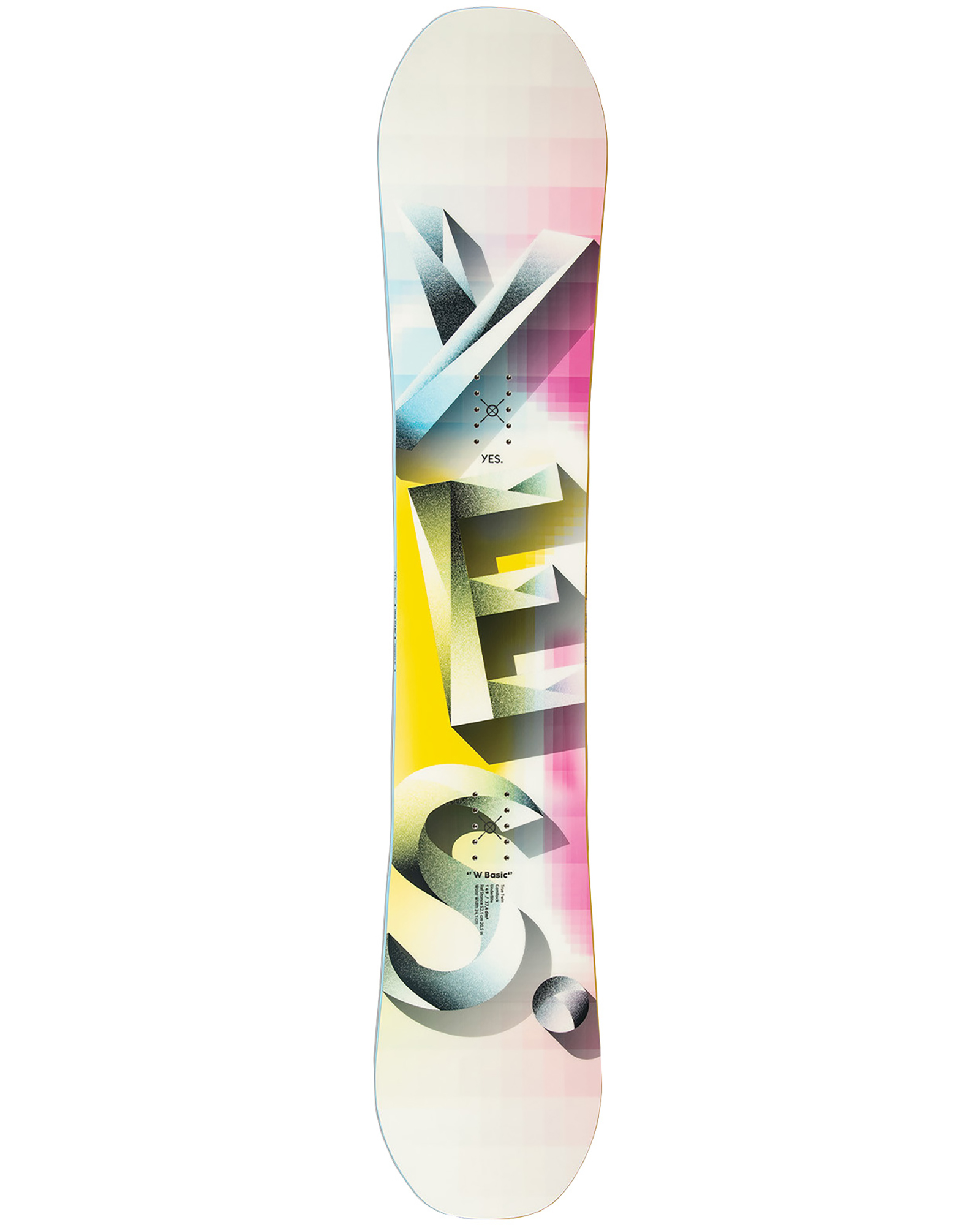If you're looking for a snowboard that can handle any terrain and condition, you might want to check out the Yes Basic Snowboard. This board is one of the most popular and well-reviewed models from Yes, a company that has been making high-quality and innovative snowboards since 2009. In this review, I'll share my personal experience with the Yes Basic Snowboard and how it performs on different criteria, such as flex, camber, torsion, float, shape, and on-track behavior. I'll also tell you what the company has done to improve this board over the years and why it's a great choice for beginners and experts alike.
SPECSHEET:
Shape: True twin, ideal for riding switch and freestyle tricks
Profile: CamRock, a combination of camber and rocker that provides stability, pop and forgiveness
Outline: UnderBite, a unique sidecut that enhances edge hold and turning ease
Flex: 5/10, a medium-soft flex that is versatile and playful
Core: Full poplar, a lightweight and durable wood core
Glass: Biax, a mellow fiberglass that gives a smooth flex
Base: Extruded, a low-maintenance and easy-to-repair base
Price range: $400-$430, depending on the size and retailer
1. Flex
Flex is the measure of how stiff or soft a snowboard is. A stiffer board is more stable and responsive at high speeds, while a softer board is more playful and forgiving at low speeds. The Yes Basic Snowboard has a medium flex, which means it's versatile and adaptable to different riding styles and preferences. You can use it for freestyle tricks, carving turns, or cruising on groomers. The medium flex also makes it easy to control and maneuver, especially for beginners who are still learning the basics.
2. Camber
Camber is the shape of the snowboard's profile, or how it curves from tip to tail. A traditional camber has a positive curve, which means the center of the board is raised off the snow. This creates more edge contact and grip, as well as more pop and power. A reverse camber has a negative curve, which means the center of the board is lower than the tips. This creates more float and forgiveness, as well as more buttery and surfy feel. The Yes Basic Snowboard has a hybrid camber, which combines the best of both worlds. It has a positive camber underfoot for stability and edge hold, and a reverse camber in the nose and tail for float and playfulness. This makes it suitable for all kinds of snow conditions, from hardpack to powder.
3. Torsion
Torsion is the measure of how much a snowboard twists along its length. A higher torsion means more rigidity and responsiveness, while a lower torsion means more flexibility and smoothness. The Yes Basic Snowboard has a moderate torsion, which means it's not too stiff or too soft. It has enough torsional stiffness to handle uneven terrain and quick turns, but also enough torsional flex to absorb bumps and vibrations. The moderate torsion also helps with edge-to-edge transitions and edge control.
4. Float
Float is the measure of how well a snowboard stays on top of deep or fresh snow. A higher float means less sinking and drag, while a lower float means more sinking and effort. The Yes Basic Snowboard has a good float, thanks to its hybrid camber and directional twin shape. The hybrid camber gives it more lift in the nose and tail, while the directional twin shape gives it more setback and taper. This means the board has more surface area in the front than in the back, which helps it float better in powder. The board also has an UnderBite edge design, which reduces the width of the board at the bindings and increases it at the contact points. This creates more pressure and bite on the edges, which helps with carving and turning on hard snow.
5. Shape
Shape is the outline of the snowboard's nose, tail, and waist. A symmetrical shape has equal dimensions on both ends, which means it can be ridden in either direction. An asymmetrical shape has different dimensions on each end, which means it has a specific front and back. The Yes Basic Snowboard has a directional twin shape, which means it's symmetrical in shape but asymmetrical in flex and stance. It has a slightly stiffer tail than nose, which gives it more pop and drive in the back foot. It also has a slightly setback stance, which gives it more stability and control in the front foot.
6. On-Track Behavior
On-track behavior is how a snowboard performs on groomed slopes or trails. A good on-track behavior means smooth glide, easy turns, and reliable edge hold. The Yes Basic Snowboard has an excellent on-track behavior, thanks to its hybrid camber, moderate torsion, UnderBite edge design, and sintered base. The hybrid camber gives it more grip and pop on hard snow, while the moderate torsion gives it more agility and smoothness on soft snow. The UnderBite edge design gives it more bite and carve on icy or slippery conditions, while the sintered base gives it more speed and durability on any surface.
Some of the most relevant features of the Yes Basic Snowboard are:
Hybrid camber for versatility and adaptability
Directional twin shape for float and stability
Moderate flex and torsion for balance and control
UnderBite edge design for edge hold and carve
Sintered base for speed and durability
In conclusion, the Yes Basic Snowboard is a versatile and affordable board that can handle any terrain and condition. It's a great choice for beginners who want to learn the basics, as well as experts who want to explore new possibilities. If you're looking for a snowboard that can do it all, you should definitely get it. Click here to check it out: The Snowboard Asylum




